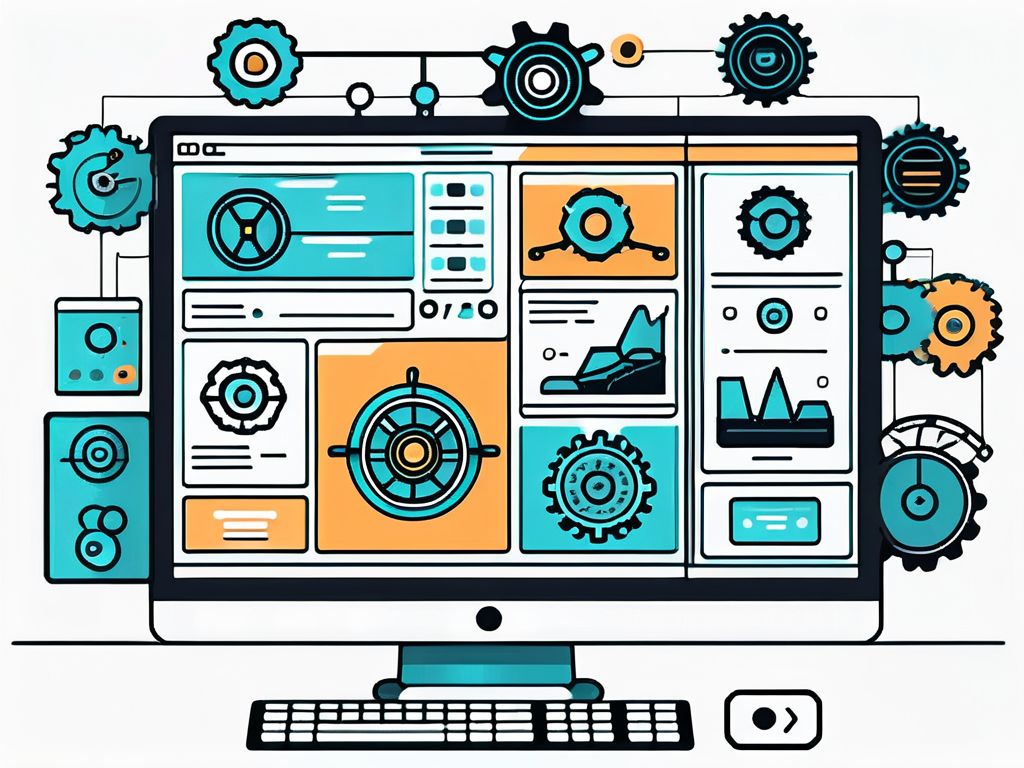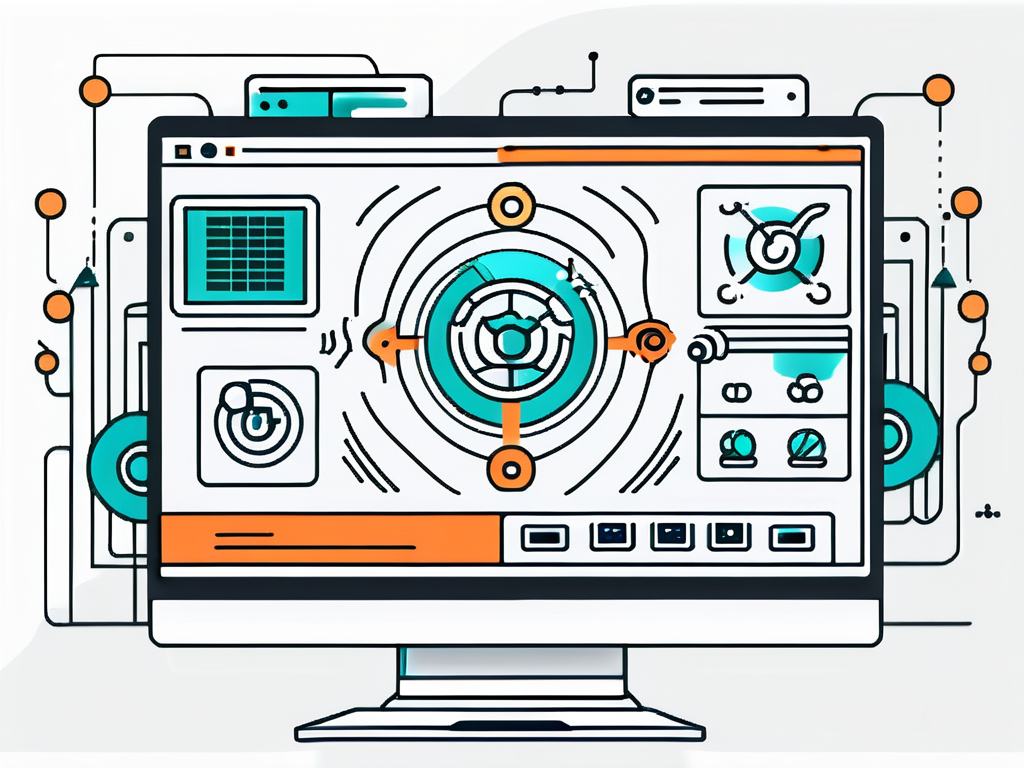Marketing professionals today are faced with the challenge of creating high-quality content consistently and efficiently. However, with the advancements in technology, content automation has emerged as a powerful solution. In this article, we will explore the basics of content automation, discuss the importance of incorporating it into your marketing strategy, explore the various tools available for automating content creation, provide step-by-step guidance on how to automate content creation, and share best practices to maximize the benefits of content automation.
Understanding the Basics of Content Automation
Content automation involves using technology and software to streamline the process of creating, managing, and publishing content. It allows marketers to automate repetitive tasks, such as content distribution and scheduling, while maintaining a consistent brand voice and delivering relevant content to their target audience. By automating these processes, marketing teams can save time, increase productivity, and focus on other key aspects of their strategy.
What is Content Automation?
Content automation refers to the use of technology to automate various stages of the content creation process. This includes content generation, curation, scheduling, and distribution. It involves leveraging tools and software to streamline these tasks, making the content creation process more efficient and effective.
The Importance of Content Automation in Marketing
Content automation has become increasingly important in marketing for several reasons. Firstly, it allows marketers to scale their content production efforts without compromising on quality. With automation tools, marketers can easily create and distribute content across multiple channels, reaching a wider audience in less time.
Secondly, content automation enables marketers to maintain consistent messaging and branding across all their content channels. By automating the publishing process, marketers can ensure that their brand voice is uniform and aligns with their overall marketing strategy.
Lastly, automation empowers marketers to make data-driven decisions. By tracking metrics and analyzing data associated with their automated content, marketers can gain valuable insights into their audience’s preferences, interests, and behaviors. This data can then be used to refine and optimize their content strategy, resulting in better engagement and higher conversion rates.
Tools for Automating Content Creation
There are several tools available to help marketers automate their content creation process. These tools are designed to simplify various aspects of content creation and distribution, enabling marketers to work more efficiently and effectively.

Content Management Systems
A content management system (CMS) is a software application that allows marketers to create, edit, organize, and publish content on their website. These systems provide a user-friendly interface for managing content, making it easier for marketers to automate publishing schedules, optimize SEO, and collaborate with team members.
Social Media Schedulers
Social media schedulers, such as Hootsuite and Buffer, allow marketers to automate the process of posting content on social media platforms. These tools enable marketers to schedule posts in advance, ensuring a consistent presence across multiple social media channels. Additionally, they provide analytics and reporting features that help marketers track the performance of their social media content.
Email Marketing Automation Tools
Email marketing automation tools, like Mailchimp and HubSpot, enable marketers to automate various aspects of their email marketing campaigns. These tools offer features such as email sequencing, personalization, and triggered workflows, allowing marketers to deliver targeted and timely content to their subscribers.
Steps to Automate Content Creation
Identifying Your Content Needs
If you want to automate your content creation process, it’s essential to start by identifying your content needs. Determine the types of content that resonate with your target audience and align with your marketing objectives. Conduct market research, analyze competitor content, and survey your existing customers to gain insights into their preferences and interests.

Setting Up Your Automation Tools
Once you have identified your content needs, it’s time to select and set up the right automation tools for your marketing strategy. Evaluate the features and capabilities of different tools and choose the ones that best align with your requirements. Integrate these tools into your existing marketing technology stack and ensure proper configuration and setup.
Scheduling and Publishing Automated Content
With your automation tools in place, it’s time to create a content calendar and schedule your automated content. Develop a publishing schedule that aligns with your audience’s online behavior and preferences. Consider factors such as peak engagement times, time zones, and platform-specific best practices. By scheduling your content in advance, you can ensure a steady flow of relevant and engaging content.
Best Practices for Content Automation
Maintaining Quality in Automated Content
While automation can streamline your content creation process, it’s essential to maintain quality throughout. Invest time and effort in crafting high-quality content templates that align with your brand voice and style. Regularly review and update your automated content to ensure it remains relevant, accurate, and engaging.

Balancing Automation and Personalization
While content automation can save time and increase efficiency, it’s crucial to strike a balance between automation and personalization. Avoid generic content that lacks a personal touch. Use automation tools to deliver targeted and personalized content based on your audience’s preferences, behavior, and demographics.
Monitoring and Adjusting Your Automation Strategy
Regularly monitor the performance of your automated content and make necessary adjustments. Track key metrics such as engagement levels, conversion rates, and click-through rates to gain insights into your content’s effectiveness. Use this data to optimize your automation strategy, refine your content, and adapt to changes in your audience’s preferences and behaviors.
Frequently Asked Questions
- Why is content automation important in marketing?Content automation is important in marketing because it allows marketers to scale their content production efforts, maintain consistent branding, and make data-driven decisions. By automating repetitive tasks, marketers can focus on other strategic activities, resulting in increased productivity and efficiency.
- What are the benefits of using a content management system?A content management system (CMS) offers several benefits, including streamlined content creation and publishing processes, simplified collaboration among team members, improved SEO optimization, and a user-friendly interface for managing content. It enables marketers to automate content distribution, maintain brand consistency, and easily update and edit content as needed.
- How can social media schedulers help with content automation?Social media schedulers allow marketers to automate the process of posting content on social media platforms. By scheduling posts in advance, marketers can maintain a consistent presence on social media, reach their audience at optimal times, and measure the performance of their social media content through analytics and reporting features.
- What are email marketing automation tools?Email marketing automation tools enable marketers to automate various aspects of their email marketing campaigns. These tools offer features such as email sequencing, personalization, and triggered workflows, allowing marketers to deliver targeted and timely content to their subscribers. They help streamline email marketing processes, improve engagement rates, and nurture leads effectively.
- How can I ensure the quality of my automated content?To ensure the quality of your automated content, invest time in crafting high-quality content templates that align with your brand voice and style. Regularly review and update your automated content to ensure it remains accurate, relevant, and engaging. Incorporate feedback from your audience and monitor key performance metrics to continuously improve and optimize your automated content strategy.
In conclusion, automating content creation in marketing offers numerous benefits, including increased efficiency, improved brand consistency, and data-driven decision-making. By understanding the basics of content automation, exploring the available tools, following the step-by-step process, and adhering to best practices, marketers can harness the power of automation to create compelling content that engages their target audience and drives business results. So, embrace content automation and take your marketing strategy to new heights.
Ready to transform your marketing strategy with the power of content automation? Jonathan Prescott, with his extensive expertise in data and digital performance, can guide your business through the digital landscape with a customer-centric approach. Contact us today to learn how our services can elevate your content creation and drive your business forward.
